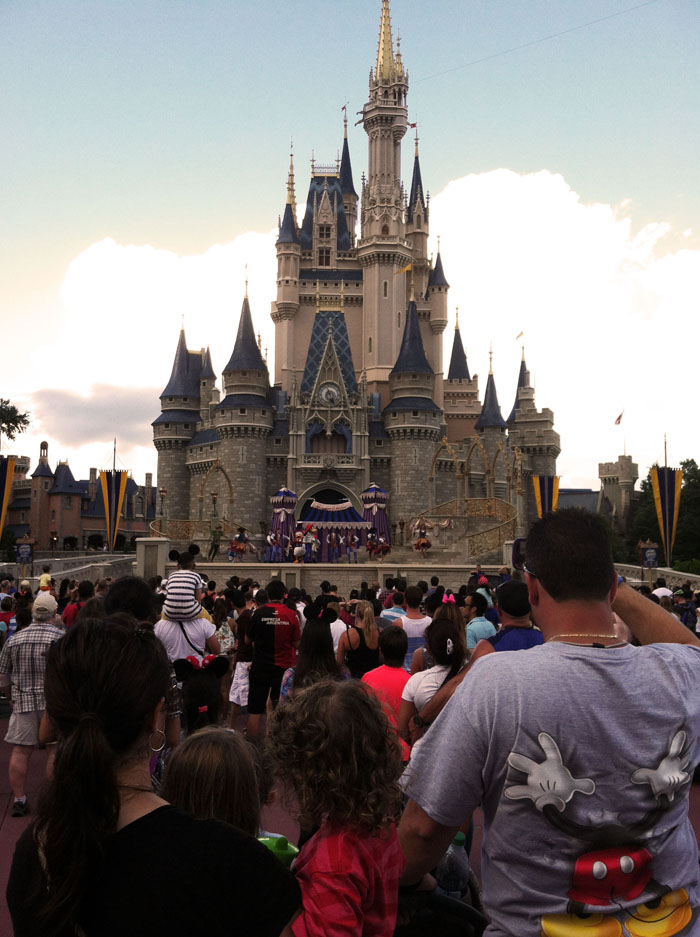
Why Lines for Disney Rides are 'Magic' (Op-Ed)

Vanessa Woods is a research scientist at Duke University and the co-founder of Dognition, a website that helps owners find the genius in their dogs. She is also the co-author of the New York Times bestseller "The Genius of Dogs."Shecontributed this article to LiveScience's Expert Voices: Op-Ed & Insights.
At 36 years old, I finally went to Disney World. I'm a new citizen of the United States, so I thought I had better take part in a great American tradition. I was not disappointed. I have never seen anything like the pageantry, the eerie cleanliness of the place (comparable only to Singapore), the nonstop entertainment. But the most fascinating part for me was what is usually the worst part for everyone else — standing in line.
The psychology of the queue
Chances are, you will wait in line today. Whether it's in traffic, at Starbucks, or at the bank. But at Disney World, this everyday event was elevated to an art form. Apparently, no one thinks about the science of standing in line more than Disney. With 17 million people each year passing through the Magic Kingdom alone, it doesn't matter how high-tech the rides are if you can't get around the most low tech of problems — people hate to wait.
There is an entire area of psychology dedicated to queuing. The emotion of queuing is a strange alchemy of increasing displeasure at having to wait matched to an increasing feeling of commitment and an unwillingness to abandon one's place in line.
It turns out that the experience of queuing is only partially defined by the actual wait time. Normally sane, rational people can be moved to "queue rage" when the line stalls, the wait time is unknown, and worst of all, if someone cuts in line. Conversely, people can experience pleasure when the line moves faster than they expect, and a gradual increase in pleasure as they approach their goal.

The most magical line on Earth
Sign up for the Live Science daily newsletter now
Get the world’s most fascinating discoveries delivered straight to your inbox.
Disney attacks each negative effect of the queue with the determination of that crocodile hunting down Captain Hook. Since the sight of a long line is demoralizing, every ride has a serpentine queue that winds through something like a movie set, with plenty of distractions. The Haunted Mansion has a waiting room with special effects. Space Mountain has 87 game stations before the ride.
Though no one wants to see the line, people still want to know how long the wait will take, so the waiting time is advertised out in front of every ride. There is even a free app, My Disney Experience, that will tell you the wait times of every ride within 200 feet of you, a definite advantage in a resort the size of San Francisco.
But Disney does not limit itself to managing expectations and optical illusions. There is an entire command center beneath Cinderella Castle that is ready for action. According to The New York Times, if a popular ride like Pirates of the Caribbean is looking slow, the command center may give the order to release more boats. Or dispatch Disney characters to entertain people while they wait.
For me, the best part about standing in line wasn't the visual effects, the optical illusions or the high-tech gadgetry (although I was slightly obsessed with the app). It was the warm, if slightly Orwellian, feeling that deep within the castle, the ground was rumbling with people who knew I was waiting in line and were running around, trying to work some magic.
Woods' most recent Op-Ed was "Dogs Become New Treatment for a War that Never Ends." The views expressed are those of the author and do not necessarily reflect the views of the publisher. This version of the article was originally published on LiveScience.









